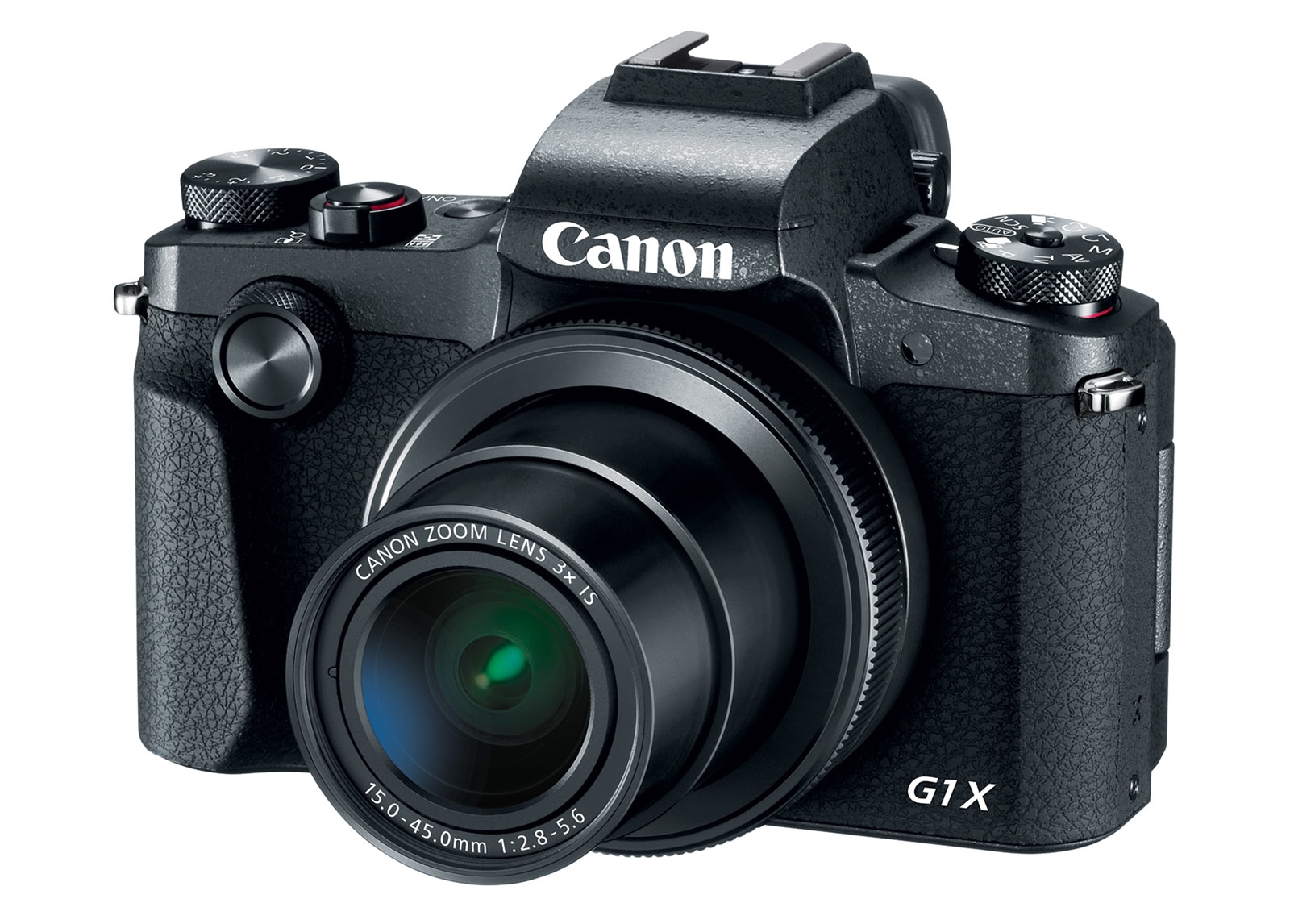Canon has unveiled its first-ever APS-C sensor compact zoom camera, the 24.3-megapixel PowerShot G1 X Mark III. It trades in the sleek body of the last G1 X Mark II model for a more DSLR-like, physical dial-laden body that’s very similar to the G5 X compact. It also features Canon’s fast and accurate dual-pixel autofocus and an all-new 2.36 million OLED electronic viewfinder (EVF). To get those big-sensor bragging rights, however, Canon had to sacrifice a few key features from the last model and jack up the price significantly.
The 2.36 million dot EVF was a much-requested feature by owners of the last model, and the G1 X Mark III now has a 3.0-inch vari-angle touch display with touch and drag autofocus — letting you focus with your finger on the touchscreen while looking through the EVF. With the dual-pixel autofocus and a Digic 7 image processor, the compact can now shoot at 7 fps with continuous AF tracking or 9 fps with fixed tracking. It also has five-axis optical stabilization and a new type of shutter release that Canon calls “more DSLR-like.”
The dual-pixel AF improves focus speed for both still and video images, but with a serious caveat next to its competition. As with other recent Canon models like the M100 mirrorless, the G1 X Mark III is limited to 1080p 60fps video, while rivals like Panasonic and Sony have cheaper compacts (the RX100 V and LX10) that can shoot 4K/30 fps and 1080p at 120 fps.
Other features include a new panoramic mode that can stitch up to seven photos together, either horizontally or vertically. There’s now WiFi, NFC and Bluetooth, making for easy pairing, photo transfers and remote live-view shooting of stills and video. Finally, there’s a new time-lapse mode that can automatically determine intervals and exposure.
The biggest pain-point for potential G1 X Mark III buyers is the price. It’s available in November 2017 for a stunning $1,299/£1,149, a good $300 more than the RX100 V which, other than the sensor size, offers better specs across the board. If you really want an APS-C compact zoom, however, the G1 X Mark III is currently the only one in the world.
Gone is the versatile 24-120mm f/2.0-3.9 zoom lens of the last model — which had a smaller 1.5-inch sensor — replaced with a slower and shorter 24-72 mm f/2.8-5.6 model (35mm equivalent). It’s easy to understand why Canon did this — with a larger image circle, an equivalent lens would likely have been too large and heavy.
During a call, company engineers pointed out that with a larger sensor borrowed from the company’s EOS 80D DSLR, the f/2.8-5.6 lens will still be capable of shallow depth-of-field, and is faster than its DSLR or mirrorless kit lenses. Photographers will now have to decide, however, whether they want a big sensor or faster lens, like the one on the cheaper Sony RX100 V or the stellar f/1.4-2.8 model on the Panasonic LX10.
(43)

